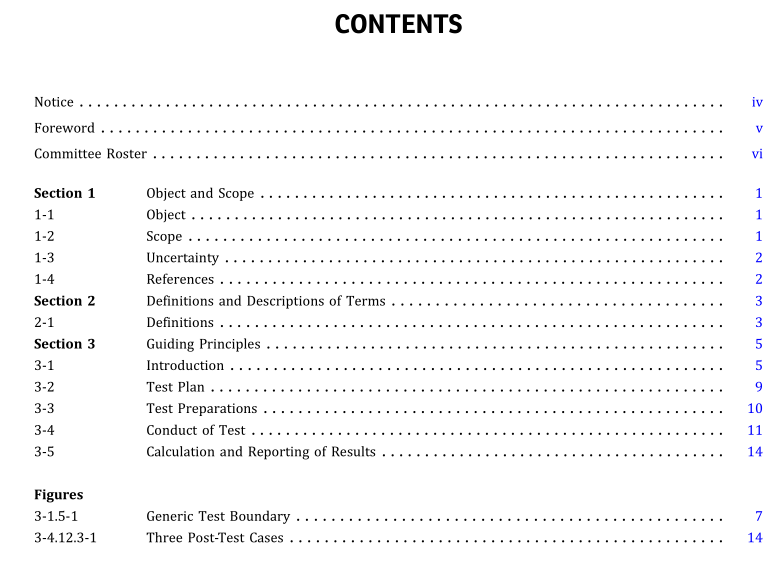ASME PTC 53 pdf download

ASME PTC 53 pdf download Mechanical and Thermal Energy Storage Systems Performance Test Codes
3-1.4.2 Data Records and Test Log.For all acceptance and other official tests, a complete set of data and a completecopy of the test log shall become the property of each of the parties to the test. As the only evidence of actual testconditions, the original log; data sheets,fles, and disks; recorder charts; tapes; etc, shall permit clear and legible repro-duction.Copying by hand is not permitted.The completed data records shall include the date and time of day theobservations were recorded.The observations shall be the actual readings without application of any instrument correc-tions.The test log should constitute a complete record of events including details that at the time may seem trivial orirrelevant. Erasures, destruction, or deletion of any data record, page of the test log, or recorded observation is notpermitted.If any corrections are made, the alteration shall be entered so that the original entry remains legible and anexplanation for the change is included.For manual data collection, the test observations shall be entered on carefullyprepared forms that constitute original data sheets authenticated by the observers’signatures.For automatic datacollection, printed output or electronic files shall be authenticated by the test coordinator and other representativesof the parties to the test. When no paper copy is generated, the parties to the testshall agree inadvance to the methodusedfor authenticating,reproducing,and distributing the data.The electronic data files shall be copied onto tape, disk,or othersuitable storage mediaand distrbuted to each party to the test.The data files shall be in a formatthatis easily accessible toall. Data residing on a machine should not remain there unless a permanent backup copy is made.
3-1.4.3 Analysis and Interpretation.Duringthe conduct of a test, or during the subsequent analysis or interpretationof the observed data,an obvious inconsistency may be found.Ifso,reasonable effort should be made to adjust oreliminatethe inconsistency. Failing this, test runs should be repeated.
3-1.5 Test Boundary
The test boundary identifies the energy streams that must be measured to calculate corrected results. The testboundary is an accounting concept used to define the streams that must be measured to determine performance.All input and output energy streams required for test calculations shall be determined with reference to the pointat which they cross the boundary. Energy streams within the boundary need not be determined unless they verifybase operating conditions, facilitate determination of the state of charge, or relate functionally to conditionsoutside the boundary.
The methods and procedures of this Code have been developed to provideflexibility in defining the test boundary for atest.The test boundary is to be defined for the specific test objective.
Forthis Code to apply, the test boundary must encompass a discrete ESS.This means that allenergy streams that crossthe boundary shall be accounted for.
For a particular test, the specific test boundary shall be established by the parties to the test. Some or allof the typicalstreams required for common ESS are shown in Figure 3-1.5-1.
ln the figure, the solid lines indicate the streams crossing the test boundary for which some or all of the mechanicalenergy,electricalenergy,heat,chemical energy,mass flow rate,thermodynamicconditions,and chemical analysis shall bedetermined to calculate the results of an overall ESs performance test.
Determination of emissions is outside the scope of this Code.
3-1.6 Required Measurements
Some flexibility is required by this Code in defining the test boundary, since it is somewhat dependent on a particularESS design. This Code does not exclude the use of the ESS instrumentation and distributed control system (DCs) forrecording primary measurements; however, such use requires extra care.Factory calibration of instrumentation gener-ally is notto the standard required by this Code for performance testing.Additionally,the DCS is notdesigned to be usedasa Code-level data acquisition system.If the DCs is to be used, the test team must understand the compression (number ofsignificant figures recorded) and dead band settings within the DCS or data history, the uncertainty of analog-to-digitalconversions, and any algorithms that impact the readings and their effect on uncertainty within the Dcs.
3-1.6.1 Primary Energy Input.Measure or calculate energy flows at the point where they cross the test boundary.Thetest boundary wouldtypically be where energy enters the ESS; however, the actual measurement may be taken upstreamor downstream ofthat pointifa better measuring location is available and the process conditions atthe meteringpoint areequivalent to, or can be accurately corrected to, the conditions at the test boundary.









